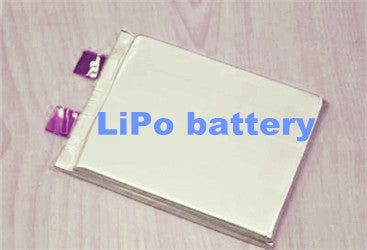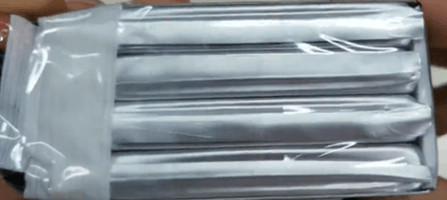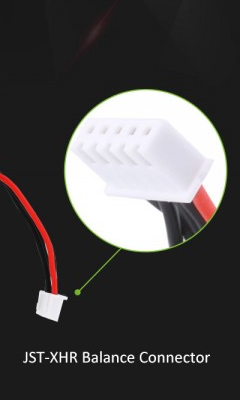
Some basic info about RC lipo battery
Lipo batteries are most vulnerable to damage in two states: when charging and discharging, lithium polymer batteries are the most volatile during charging, and a little slipping during this process may cause disaster. This is why we must be especially careful at this time.
Let's first understand the situation of Lipo battery.

Lipo batteries consist of one or more batteries connected in series. The reference voltage range of each battery is 3.7v (conventional). All high-power lipo batteries are made by stacking several batteries in series. This is the meaning of the "S" value in "3S" and "4S", for example-the number of units in series. So the 3 cell battery is 3.7V x 3 or 11.1V. Although the superimposed voltage is 11.1V, it is critical that each individual battery in series is at the same 3.7 volts. At this time the battery is considered to be balanced.
The battery in the picture below is a 4S rc battery. It can be seen from the side that it is formed by the superposition of four batteries, and the voltage is 3.7V x4 = 14.8V.

These batteries work together to increase the battery's power level, and they can also work together. The problem is that when you charge LiPo batteries with many different batteries, you must ensure that each battery is handled separately. Keep in mind that if any LiPo battery is overcharged, there is a risk of damage or explosion. This is why all LiPo batteries have two sets of wires coming out. The main (usually larger) wire set is the wire inserted into the RC product. The smaller wire is the battery tap, which can monitor and adjust the state of charge of individual batteries. Each battery in the battery will have a wire and a ground wire. All LiPo battery chargers have ports that accept these wires to ensure the health and safety of the battery.
This is where the concept of cell balance comes into play. Therefore, it is important to always ensure cell balance. You can do this using the battery meter function on the charger.

So why is the battery unbalanced?
The battery imbalance is mainly caused by the mismatch of the chemical properties of each battery of the battery. A battery may have slightly more capacitance than other batteries, or a battery may be more eager to give up its electrons than other batteries. Either way, this is mainly a battery quality issue. Purchasing high-quality packaging from reputable suppliers such as Ovonic that uses high-quality batteries and charging according to the manufacturer's battery specifications is the first step to avoid problems caused by battery imbalance.
In addition to voltage, each battery also has the parameters of mAh capacity and C rating. mAh is the capacity of how much current the battery can hold, and the C rating indicates how much current it can provide.
When you use the battery to discharge, the C rating and voltage are in effect. The C rating is a measure of how many amperes the battery can provide.
To calculate the battery's current supply capability, you can multiply the C rating by the mAh rating. For example, a battery with a C rating of 50C and a capacity of 1300 mAh (or 1.3 Ah) can theoretically provide 50 x 1.3 or 65 amps.
The battery is usually rated at C rating-the first number (50 in the above case) is a constant rating, that is, the amount of current that the battery can provide on a regular basis. The next number is the burst level, that is, how much current the battery can provide in a short time.
PS: if you want to know more about the C-rating, link to this article:https://www.ovonicshop.com/blogs/battery-knowledge/what-does-the-c-rating-mean-on-a-lipo-battery
The current depends on the voltage and the type of motor and props you are running. When the motor rotates the props, they will draw current from the battery.
Therefore, if you know that your motor needs to draw 15A each when it is fully open at 3S (11.1 V), you must use a battery that can provide a large current.
If you use a 4S battery pack, the motor will consume more current because the props will spin faster. In this case, the motors may each pull 20A, so you now need 80A.
If you try to draw more current from the battery than it can supply, the voltage will drop too much and the battery's chemical properties will be damaged. This will reduce the life of the battery and may even swell.


Leave a comment